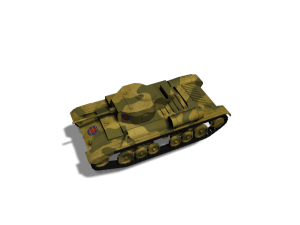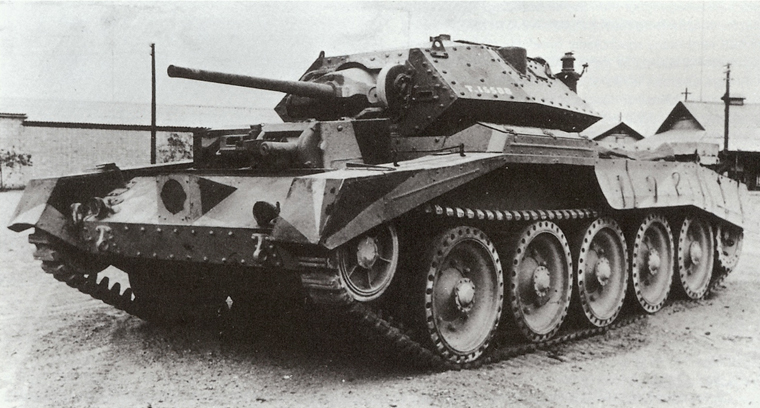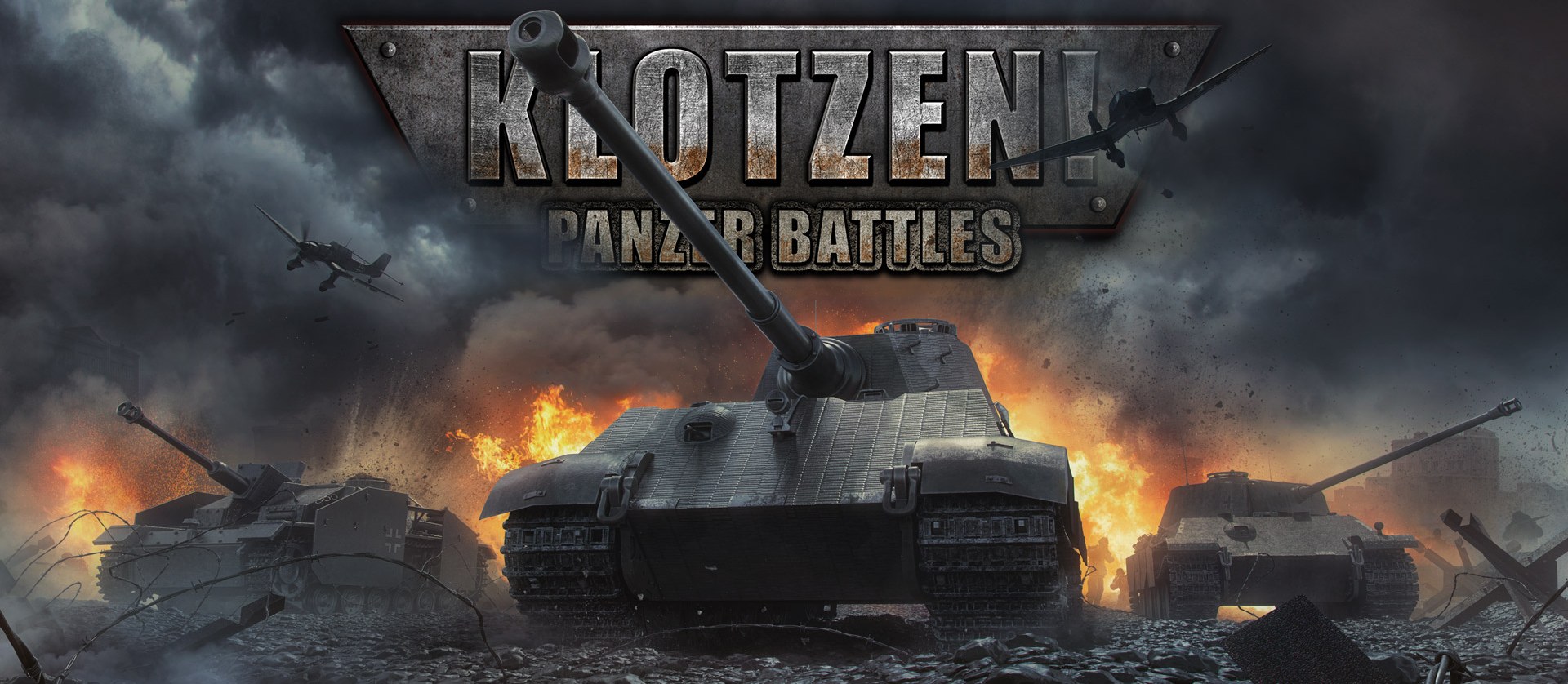
In the mid 1930s it became clear that only two main models of tanks will be kept in service of the British army-an infantry tank and a cruiser tank, which was intended to exploit breakthroughs and make forays deep into enemy territory. The pilot model of the first cruiser tank was ready in 1936 under the designation A9E1.
A9E1 was the first British tank to use a fully hydraulically-powered traverse turret and to have a centrally located turret. Its armor was light, with maximum thickness of 14 mm, but the tank was fast, as it could achieve top speed of 25 mph (40 km/h). A9 was armed with 2-pounder QF gun and three Vickers .303 machine guns. It had weight of around 12 tons and it carried a crew of six, who were placed in tight space.
The design of A9 was accepted in 1937 and the order was placed for 125 units. The first ones left the factory in January 1939 and the last ones in January 1941. Unlike the pilot design, Mk I was produced in two main variants-as a Cruiser Mk I (A9) armed with 2-pounder QF gun and as a Cruiser Mk I (CS-for close support) armed with 3.7 inch (94 mm) /L15 breech-loaded howitzer (which were actually altered A9 models that could fire HE shells).
The Cruiser Mk I (A9) saw combat in France, Africa and in Greece. It was effective against weakly-armored Italian tanks and its 2-pounder gun could penetrate armor of German IIID and IVD tanks. However, when the Germans introduced more thickly armoured Panzer IVE variant in North Africa in the spring of 1941, Cruiser Mk1 was quickly rendered obsolete. By the end of 1941, all surviving Cruiser Is were removed from the front line and kept for training.

Unfortunately for the British, the first Cruiser had numerous disadvantages. It minimal armor made it very vulnerable for most Axis anti-tank weapons. The Cruiser was also mechanically unreliable-the suspension pitched around on uneven ground and the tracks often fell off. Also, a major weakness was the fact that A9s two-pounder gun could not fire high explosive shells that were needed to destroy enemy artillery, anti-tank guns and soft-skinned vehicles. This weakness became painfully obvious in fighting against the Germans in Africa in 1941, as the German tanks were always supported with panzer grenadiers, anti-tank guns and artillery. This was the main reason for altering A9s and fitting them with 3.7 inch (94 mm) /L15 breech-loaded howitzer (the CS version of Mk I could fire smoke and HE shells but not the armor-piercing ones).
The legacy of the Mk I could be found in Cruiser Mk II (A10), which was an up-armoured version of A9 (and was lacking frontal mini-turrets). Cruiser Mk II A10 was also produced in small numbers. The tank that was also related to A9 was the Valentine, which borrowed the suspension and many parts from A9. Today, surviving Mk Is can be seen on display at The Tank Museum in Bovington, England and at Cavalry Tank Museum in Ahmednagar, India.





Recent Comments